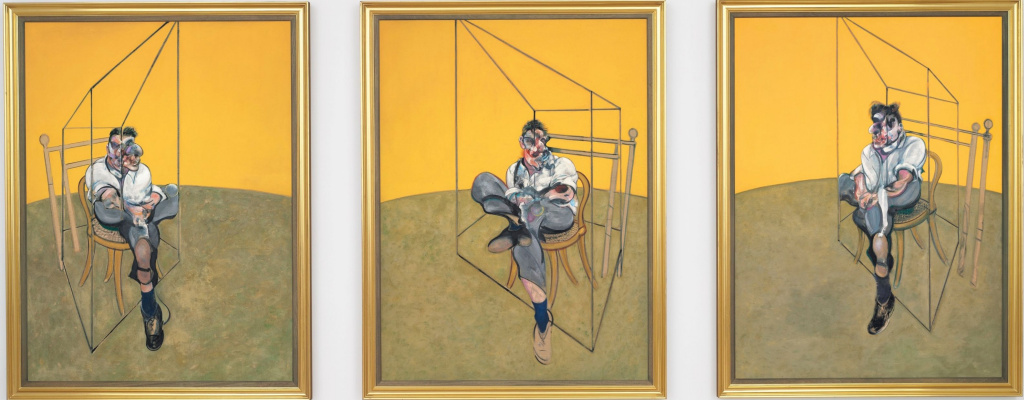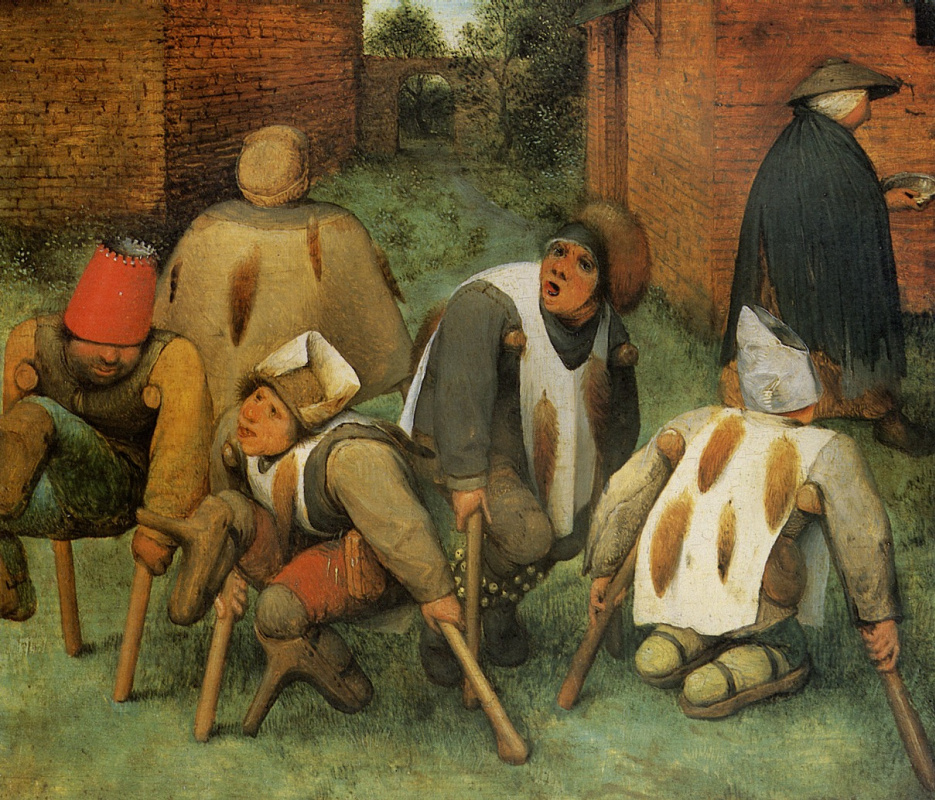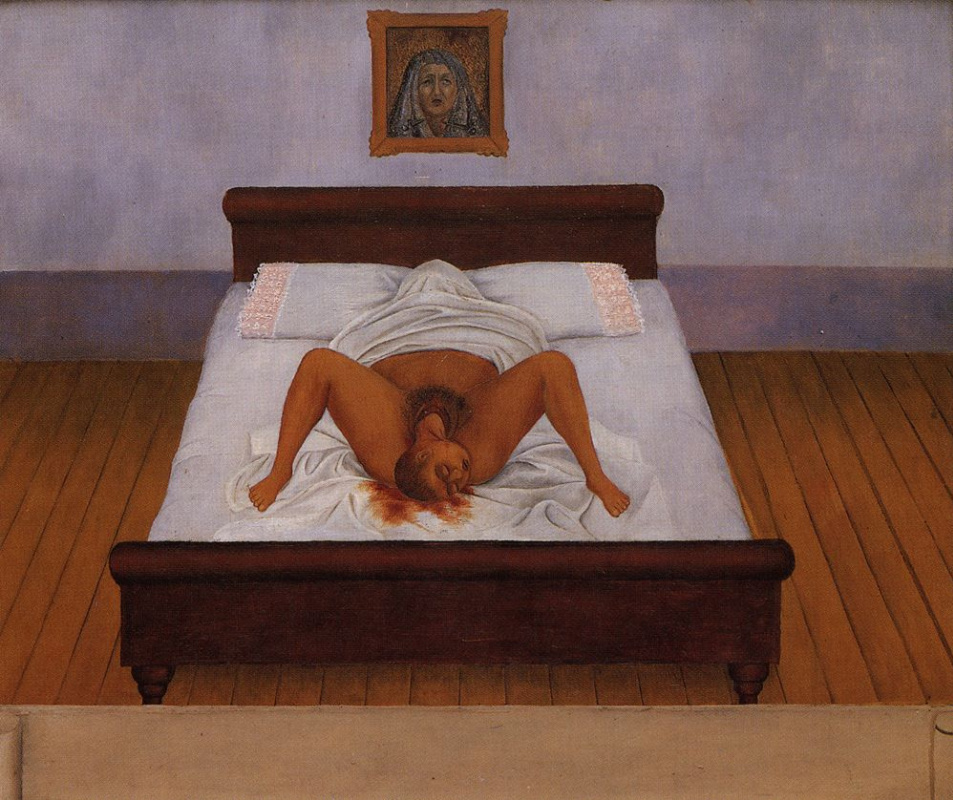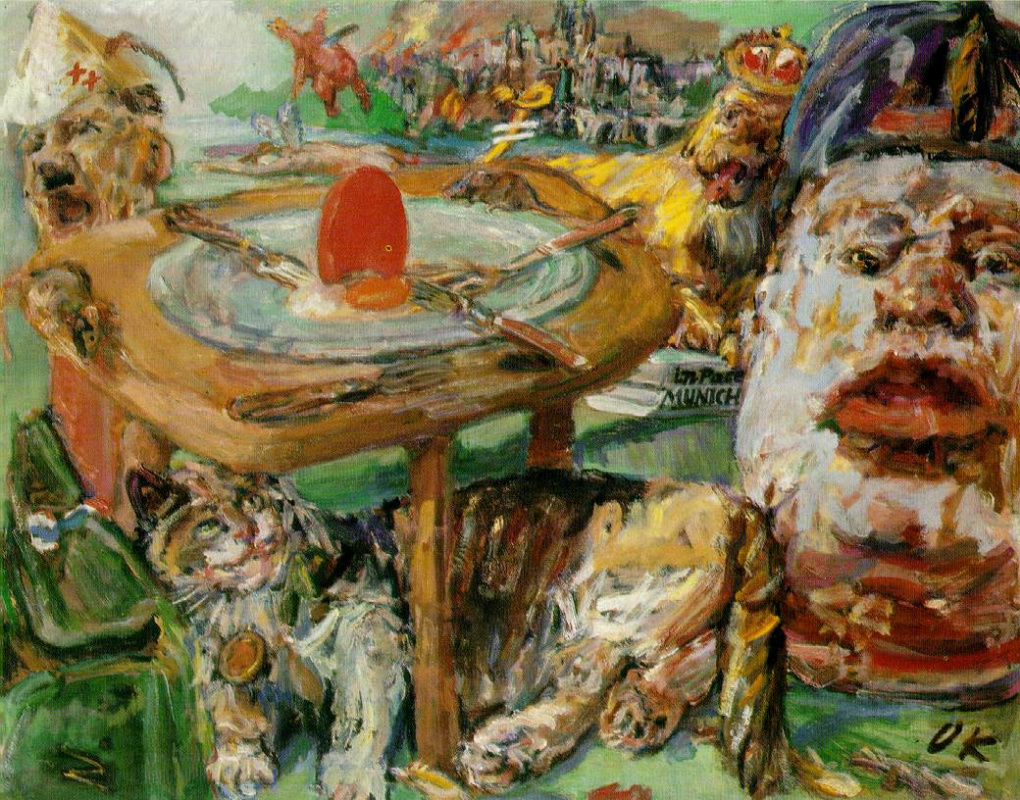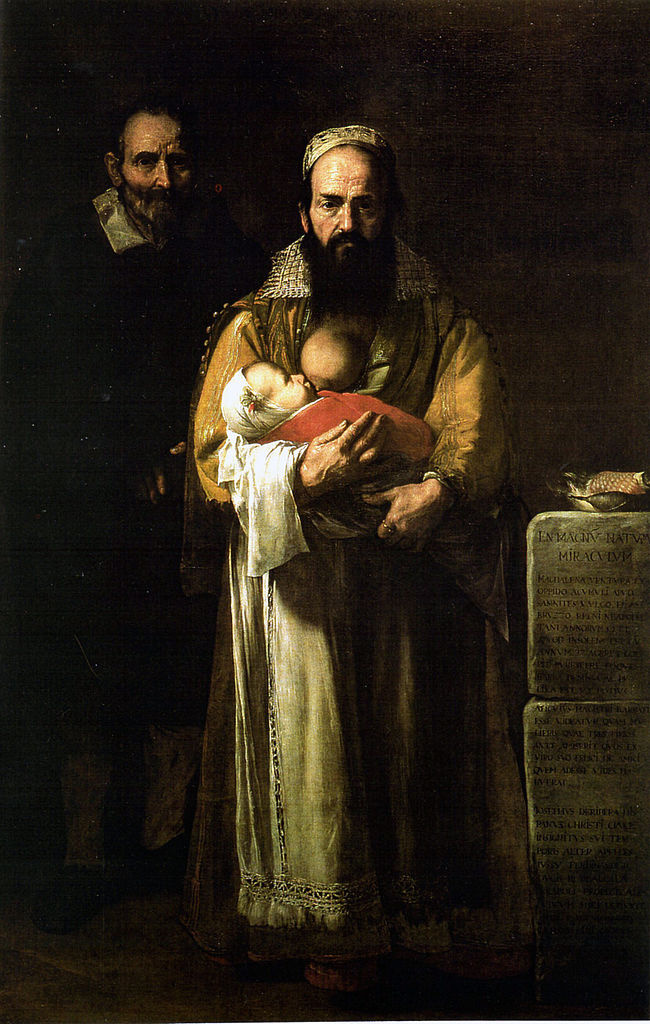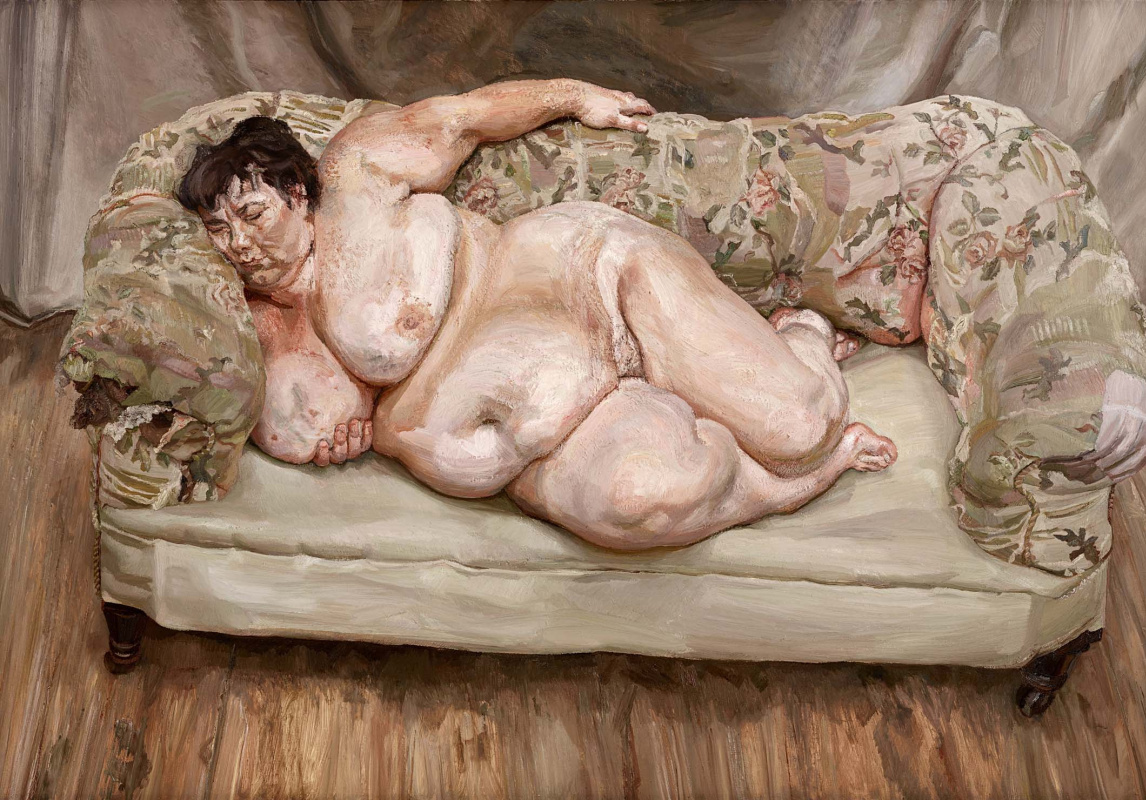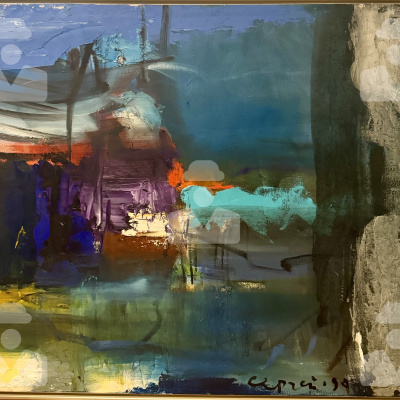Why does ugliness attract as much as beauty? Perhaps, because caterpillars give butterflies, and manure produces juicy fruits. In life, one complements the other. Ugliness often makes people think and feel, which is the main role of art. It does not adorn, it summarizes and awakens. Who scared us all these years? We announce the list.
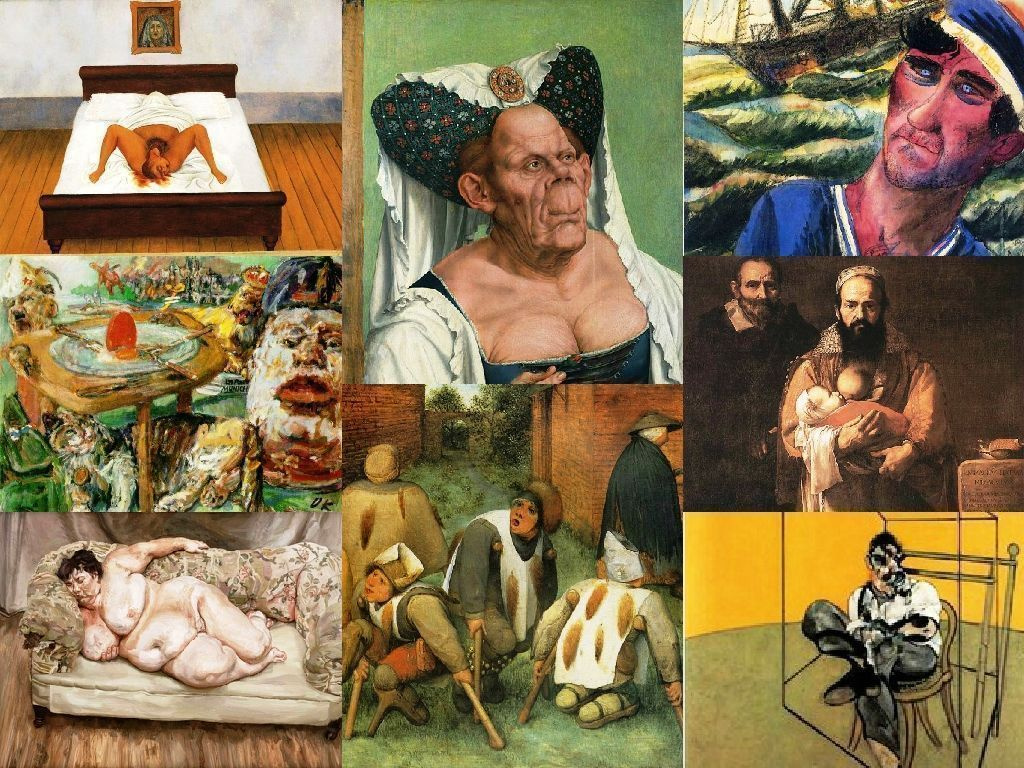
1. Quinten Massys, An Old Woman ('The Ugly Duchess')
In fact, the Flemish Quinten Massys invented a caricature in 16th century. He depicted the imperfect human features in a hypertrophied form. A portrait satirizes a woman who wants to look much younger than she is. The flabby breast is tightened in a corset, and her hand holds a ripped fresh rose, a symbol of youth. This is the obvious joke number one. And number two is in her cap: it was too old-fashioned for the 16th century. Unfortunately, now we can not catch this.
Why has Massys addressed the ugliness? He wanted to hint the young ladies that everything has its time, and they should dress and behave according to their age.
There is a long held historical theory that the prototype of the portrait is Leonardo da Vinci’s lady from a sketch. Da Vinci was so keen on finding the ideal and golden section, that he paid much attention to its opposites — the freaks.
This portrait is often cited as a "prototype" of the Duchess in Sir John Tenniel’s Classic Illustrations of the book by Lewis Carroll, which celebrated 150th anniversary in 2015. Read in Arthive: The anniversary of "Alice's Adventures in Wonderland": exhibitions of works from Tenniel to contemporaries and the tour of the Carroll’s manuscript.
2. Francis Bacon, Three Studies of Lucian Freud
All art work of Bacon is scary enough, but let’s talk about the painting above. In 2013 it was sold for a record amount at open auction hitting 142.4 million dollars! Bacon’s record was being broken only in 2015, that is, for almost 2 years triptych has been the most expensive piece in the world.
Sometimes this work literally makes your head ache. Bacon realistically showed how the person looks in a full emotional "exasperation". If we are at odds with ourselves, we break into pieces and cause irritation to everyone around. The only rescue is to gather up again!
Sometimes this work literally makes your head ache. Bacon realistically showed how the person looks in a full emotional "exasperation". If we are at odds with ourselves, we break into pieces and cause irritation to everyone around. The only rescue is to gather up again!
3. Francisco Goya, Saturn Devouring One of His Sons
The painting is sickening. It gets even more strange because Goya created it for his mansion in Madrid.
14 mural paintings that decorated the house known as "la Quinta del Sordo" ("House of the deaf" for its last owner did not hear) where Goya lived have come to be known as the Pinturas negras (Black Paintings). For 50 years no one has seen them, except for the guests of Goya. Baron Émile d´Erlanger acquired "la Quinta" in 1873 and had the paintings transferred to canvas by Salvador Martinez Cubells. The works suffered enormously in the process, losing a large amount of paint. The Baron wanted to sell the paintings at the exhibition in Paris, but finally, he donated them to the State, and they were sent to the Prado Museum, where they have been on view since 1889.
Viewers often ask why the painting is so gloomy? But how else can a deity look like, devouring his children in fear of losing his power?
14 mural paintings that decorated the house known as "la Quinta del Sordo" ("House of the deaf" for its last owner did not hear) where Goya lived have come to be known as the Pinturas negras (Black Paintings). For 50 years no one has seen them, except for the guests of Goya. Baron Émile d´Erlanger acquired "la Quinta" in 1873 and had the paintings transferred to canvas by Salvador Martinez Cubells. The works suffered enormously in the process, losing a large amount of paint. The Baron wanted to sell the paintings at the exhibition in Paris, but finally, he donated them to the State, and they were sent to the Prado Museum, where they have been on view since 1889.
Viewers often ask why the painting is so gloomy? But how else can a deity look like, devouring his children in fear of losing his power?
4. Pieter Bruegel the Elder, The Beggars (also The Cripples)
The work by the Flemish renaissance
painter Pieter Bruegel the Elder is a classic example of the uglily beautiful genre.
Along with the picturesque traditions of the Italian Renaissance
, the Spanish Inquisition reached the Netherlands as well. By 1566 there were stirrings of revolt, turning on two issues: a demand for more political autonomy and outrage at religious persecution.
On 5 April, 1566, 200 Calvinist nobles — united by the cry "Vive le gueux" (long live the beggar!) and therefore dubbed ‘the Beggars' — rode through Brussels to present a petition of demands to Philip’s Regent, Margaret of Parma. Bruegel, who was living in Brussels at the time, probably saw them riding past. So, the painting is thought to contain an allusion to the political situation of the day and the Beggars' Revolt against the Spanish occupation.
Also this work would be a satirical parody, with the beggars representing the different classes of a society on the road to ruin. The classes are indicated by their headgear: a cardboard crown for the king, a paper coiffe for the army, a beret for the bourgeoisie, a cap for the peasantry, and a bishop’s mitre for the church.
On 5 April, 1566, 200 Calvinist nobles — united by the cry "Vive le gueux" (long live the beggar!) and therefore dubbed ‘the Beggars' — rode through Brussels to present a petition of demands to Philip’s Regent, Margaret of Parma. Bruegel, who was living in Brussels at the time, probably saw them riding past. So, the painting is thought to contain an allusion to the political situation of the day and the Beggars' Revolt against the Spanish occupation.
Also this work would be a satirical parody, with the beggars representing the different classes of a society on the road to ruin. The classes are indicated by their headgear: a cardboard crown for the king, a paper coiffe for the army, a beret for the bourgeoisie, a cap for the peasantry, and a bishop’s mitre for the church.
5. Otto Dix, Sailor and Girl
Dix was a pacifist and a humorist, whom Hitler terribly disliked (as all Expressionists, though).
Dix, like Bruegel, clearly has caught social waves and moods and vividly joked about things that in fact were not fun at all. In one single painting he could reveal the whole character and display the tragicomedy of its life, as in case of the "Sailor and Girl".
Dix, like Bruegel, clearly has caught social waves and moods and vividly joked about things that in fact were not fun at all. In one single painting he could reveal the whole character and display the tragicomedy of its life, as in case of the "Sailor and Girl".
Every work of Otto Dix is a total movie.
Do you consider him a provocateur who could not draw? Just look at his technical self-portrait.
His artistic method Dix explained in a simple way, "Painting is the effort to produce order in yourself. There is much chaos in me, much chaos in our time."
6. Frida Kahlo, My Birth
The painting by Frida Kahlo is in a collection of Madonna. The pop singer claims that, "If somebody doesn’t like this painting, then I know they can’t be my friend."
So, what did Frida want to tell us? Perhaps, that any person is a psychologist, a rescuer and a golden fish for himself/herself. As Phoenixes, we are born and re-born several times during our lifetime. Often pain accompanies growth.
7. Oskar Kokoschka, The Red Egg
Here we ask a traditional question: what did Oskar Kokoschka want to say? The picture is an allegory to the Munich Agreement of 1938, which led to the destruction of Czechoslovakia in 1939.
"The Red Egg" is an antifascist manifesto and even more. It’s an indictment of all the powers, not just the fascist, that had caused suffering in World War II. The Munich Agreement permitted Nazi Germany’s annexation of portions of Czechoslovakia mainly inhabited by German speakers, for which a new territorial designation "Sudetenland" was coined.
In his book "My Life," Oskar Kokoschka commented on this painting, "A roast chicken, prepared to be served — Czechoslovakia — flies away and drops a red egg on the table. Prague burns in the background. Mussolini sits at the table with Hitler, who is wearing a soldier’s helmet made of paper. A cat lies beneath the table with a Napoleonic hat and a cockade. Behind them is the lion of England, its tail twisted into a pound sign, atop a pedestal reading "In Pace Munich."
The Agreement was signed by representatives of France, Great Britain, Germany and Italy. Diplomats decided to sacrifice Czechoslovakia to prevent a world war. Alas, it did not help.
In his book "My Life," Oskar Kokoschka commented on this painting, "A roast chicken, prepared to be served — Czechoslovakia — flies away and drops a red egg on the table. Prague burns in the background. Mussolini sits at the table with Hitler, who is wearing a soldier’s helmet made of paper. A cat lies beneath the table with a Napoleonic hat and a cockade. Behind them is the lion of England, its tail twisted into a pound sign, atop a pedestal reading "In Pace Munich."
The Agreement was signed by representatives of France, Great Britain, Germany and Italy. Diplomats decided to sacrifice Czechoslovakia to prevent a world war. Alas, it did not help.
8. Willem de Kooning, Woman III
"Woman III" by Willem Kooning is the fourth most expensive painting ever sold.
It has a rich travel history. From late 1970s the painting was part of Tehran Museum of Contemporary Art collection, but after the islamic revolution in 1979, the situation has changed. The painting depicting naked woman could not be shown to public any more.
Finally, in 1994 it was sold outside Iran.
In November 2006, one American millionaire sold the "Woman III" to another billionaire for $137.5 million.
It has a rich travel history. From late 1970s the painting was part of Tehran Museum of Contemporary Art collection, but after the islamic revolution in 1979, the situation has changed. The painting depicting naked woman could not be shown to public any more.
Finally, in 1994 it was sold outside Iran.
In November 2006, one American millionaire sold the "Woman III" to another billionaire for $137.5 million.
…Why to pay such money? Women having interesting fates have always been highly appreciated!
9. José de Ribera, Magdalena Ventura with Her Husband and Son
As they say, "not by Conchita Wurst alone…" The bearded women were noted by an entertainment industry at all times. Magdalena Ventura was a woman with hormonal disorders who lived at the court of the Duke of Alcalá. Back in those times it was fashionable and prestigious among nobles to patronize people with deviations, not on the kindness of the soul, but for a status.
So the Duke ordered a portrait of Magdalena to the artist José de Ribera.
So the Duke ordered a portrait of Magdalena to the artist José de Ribera.
10. Lucian Freud, Benefits Supervisor Sleeping
The grandson of "the very same" psychoanalyst Freud dissected the reality in his own way, by means of paintbrushes.
Lucien Freud was one of the most highly paid artists of his time and has been painting what is seen. In this case, he saw that the bodies and souls somehow became obese. Some from laziness, others to close from everyone in an encasement of one’s body.
Perhaps, it’s time for the audience to get out of oneself … and open oneself to people? Horrified by the masterpieces, to start on changing and exposing. For the better? It’s hard to know …
Written by Lena Skachkova






